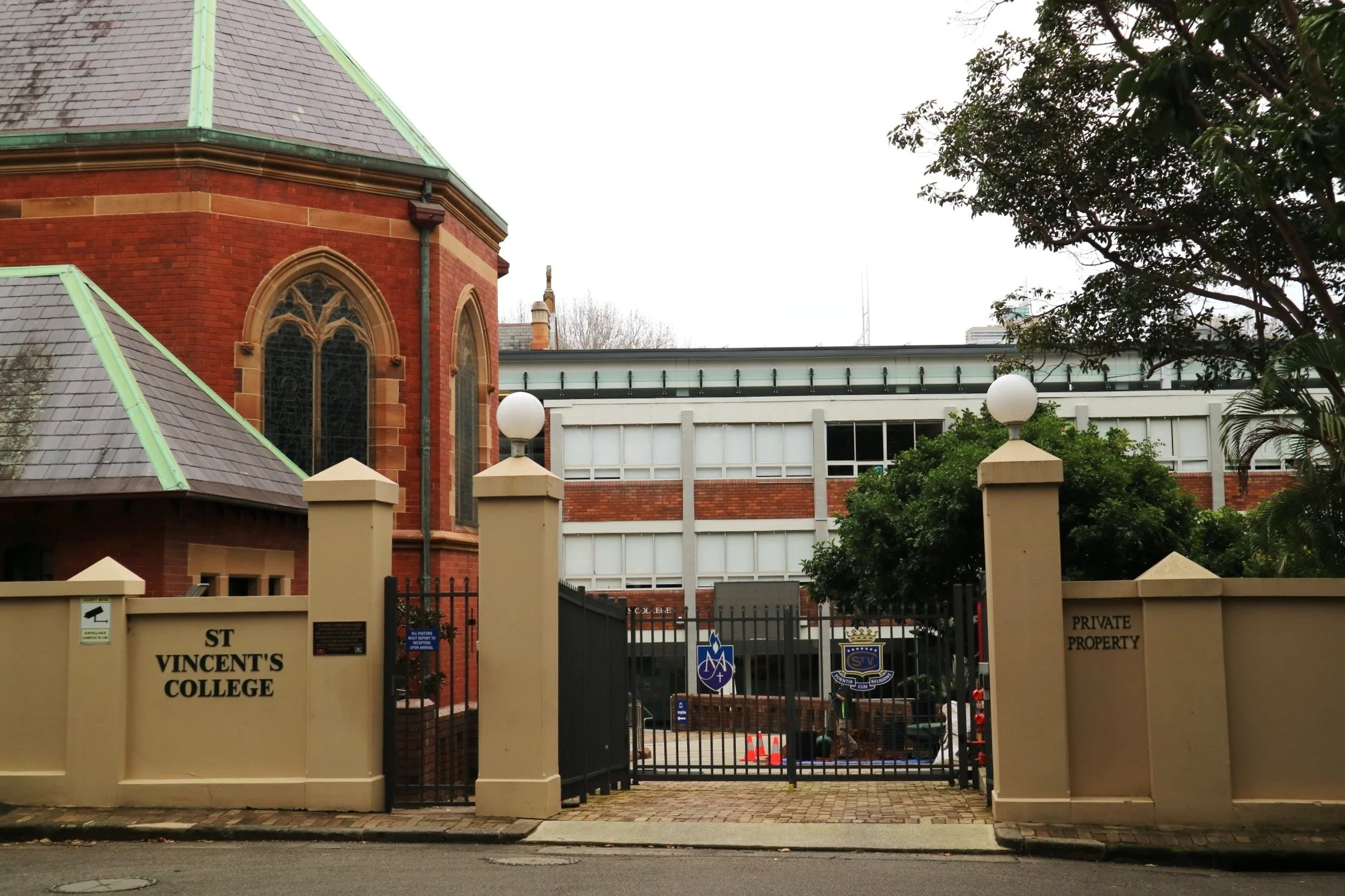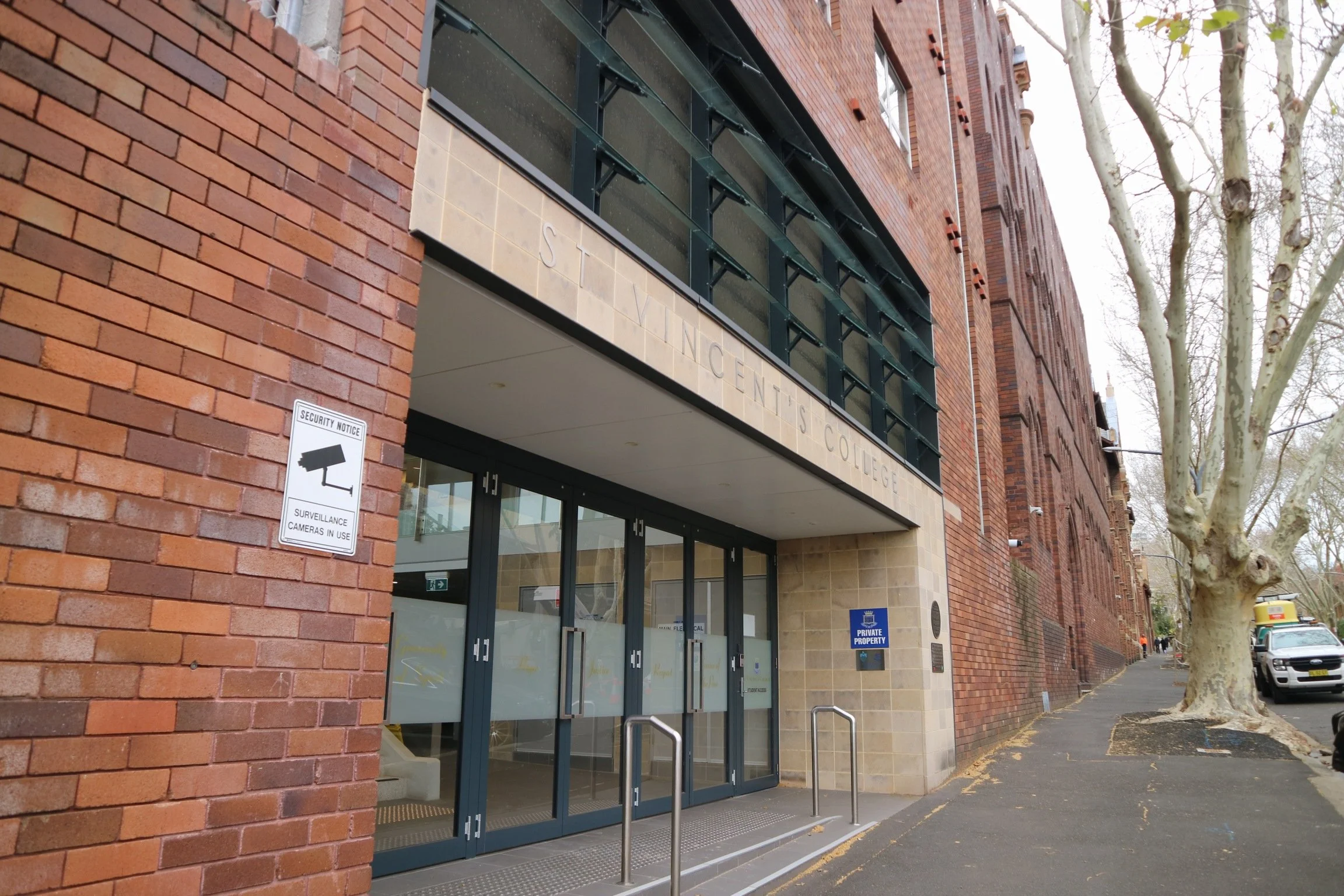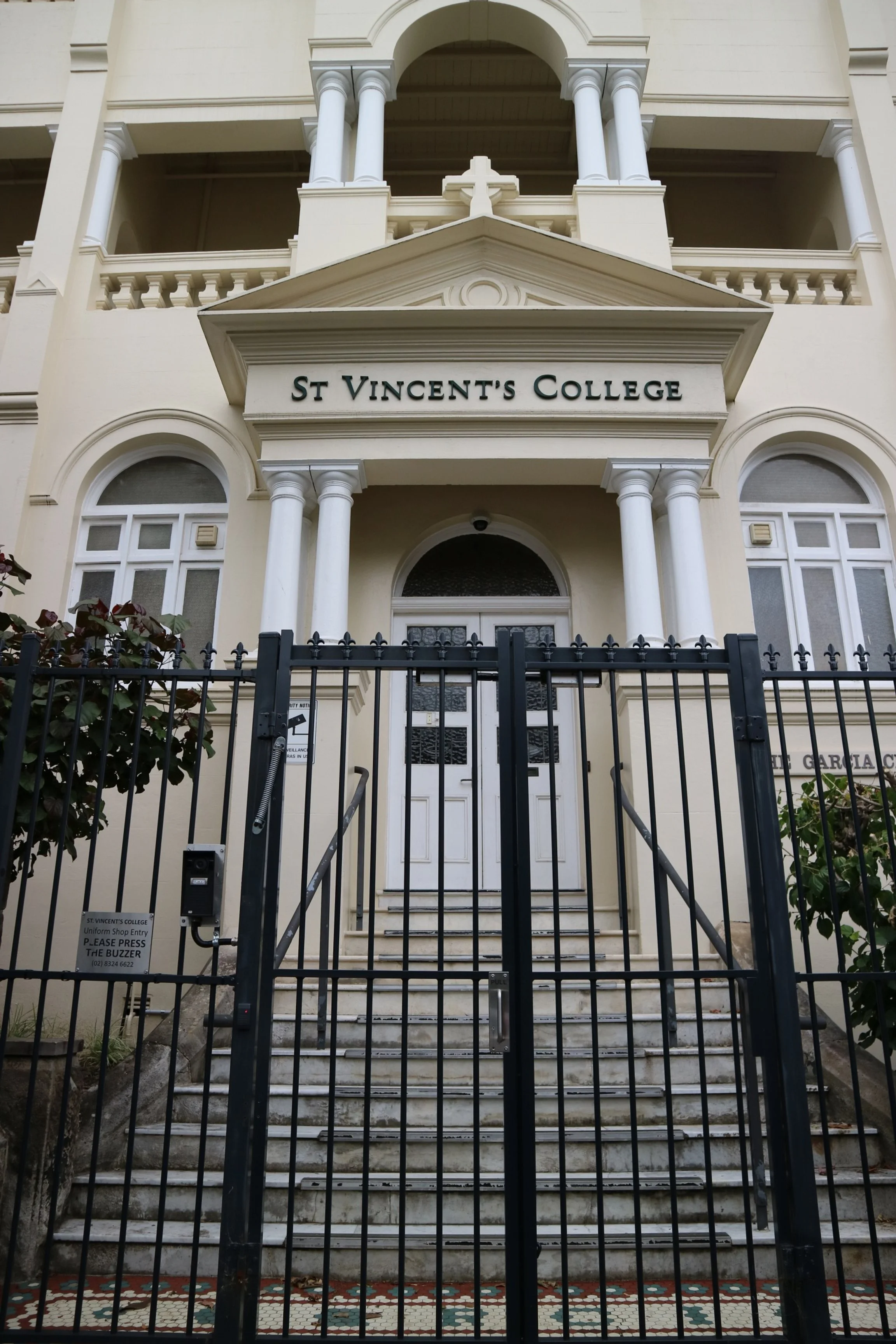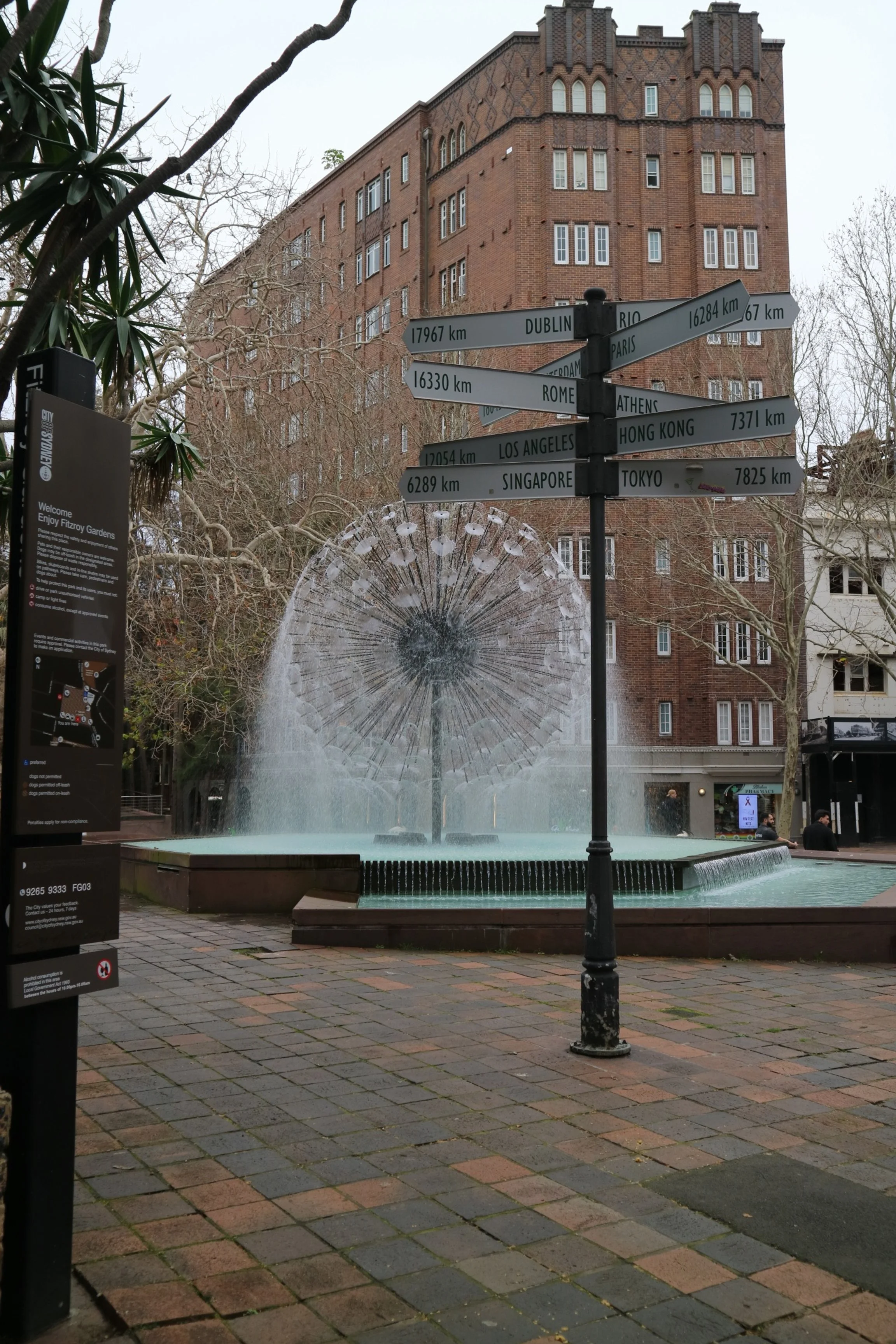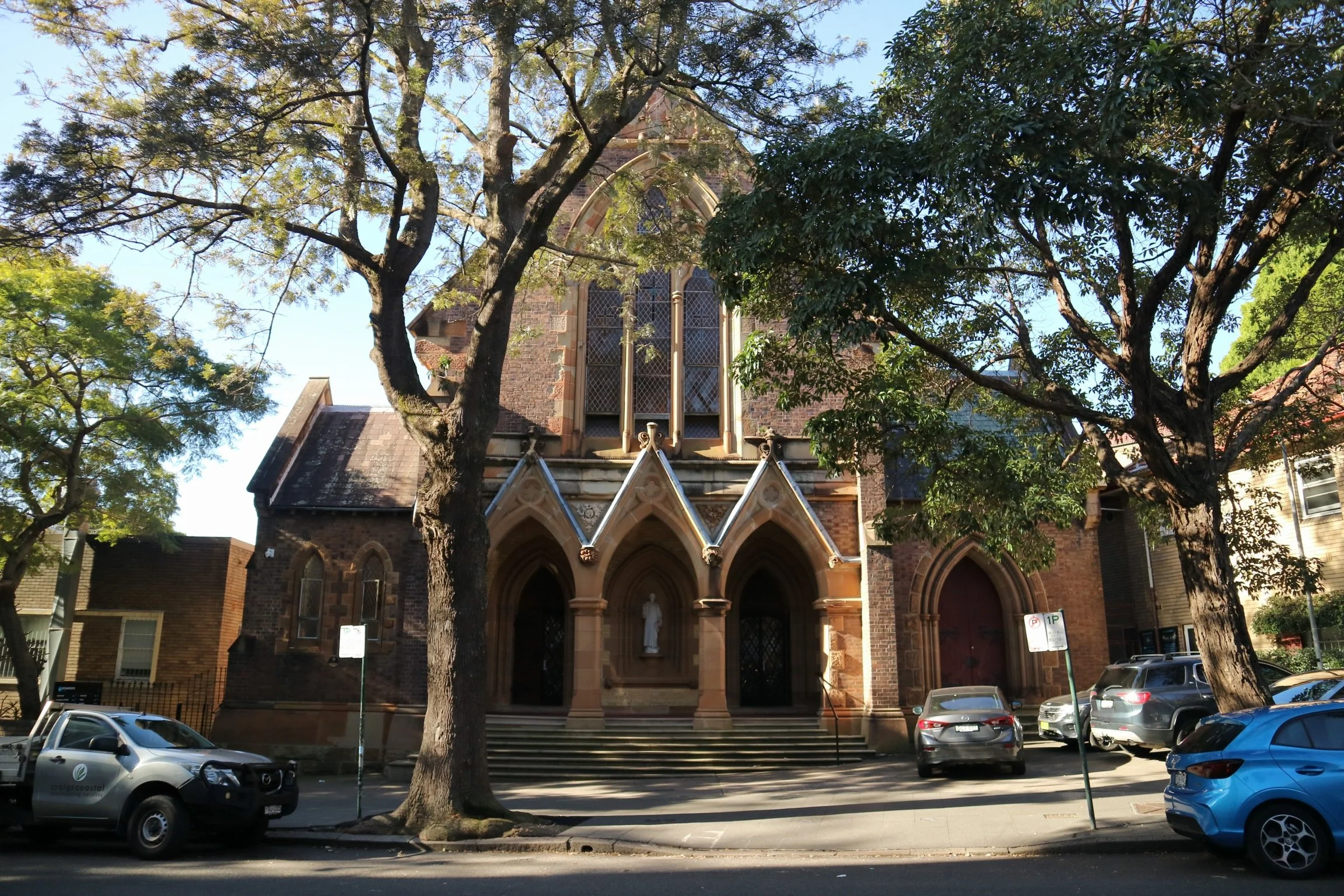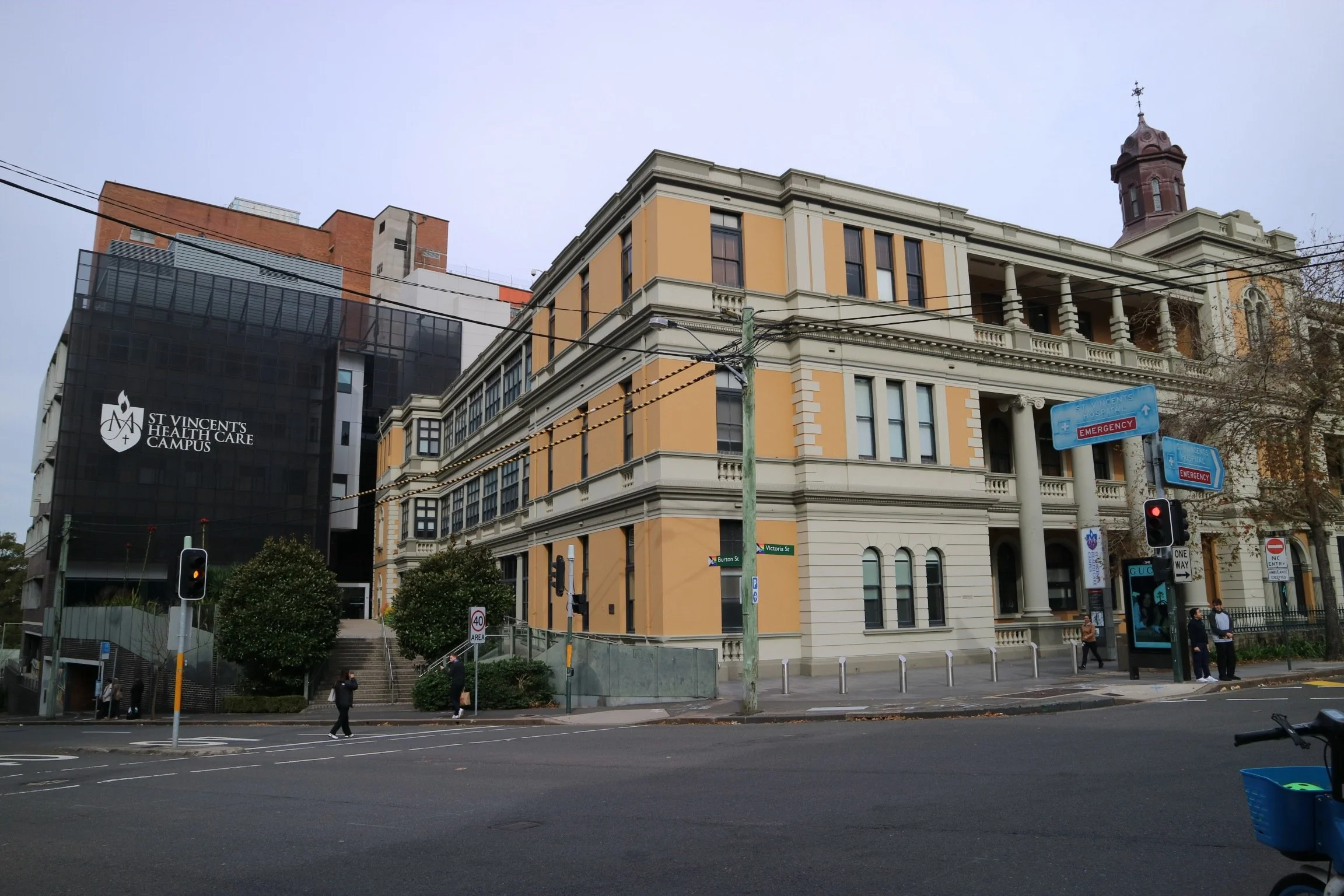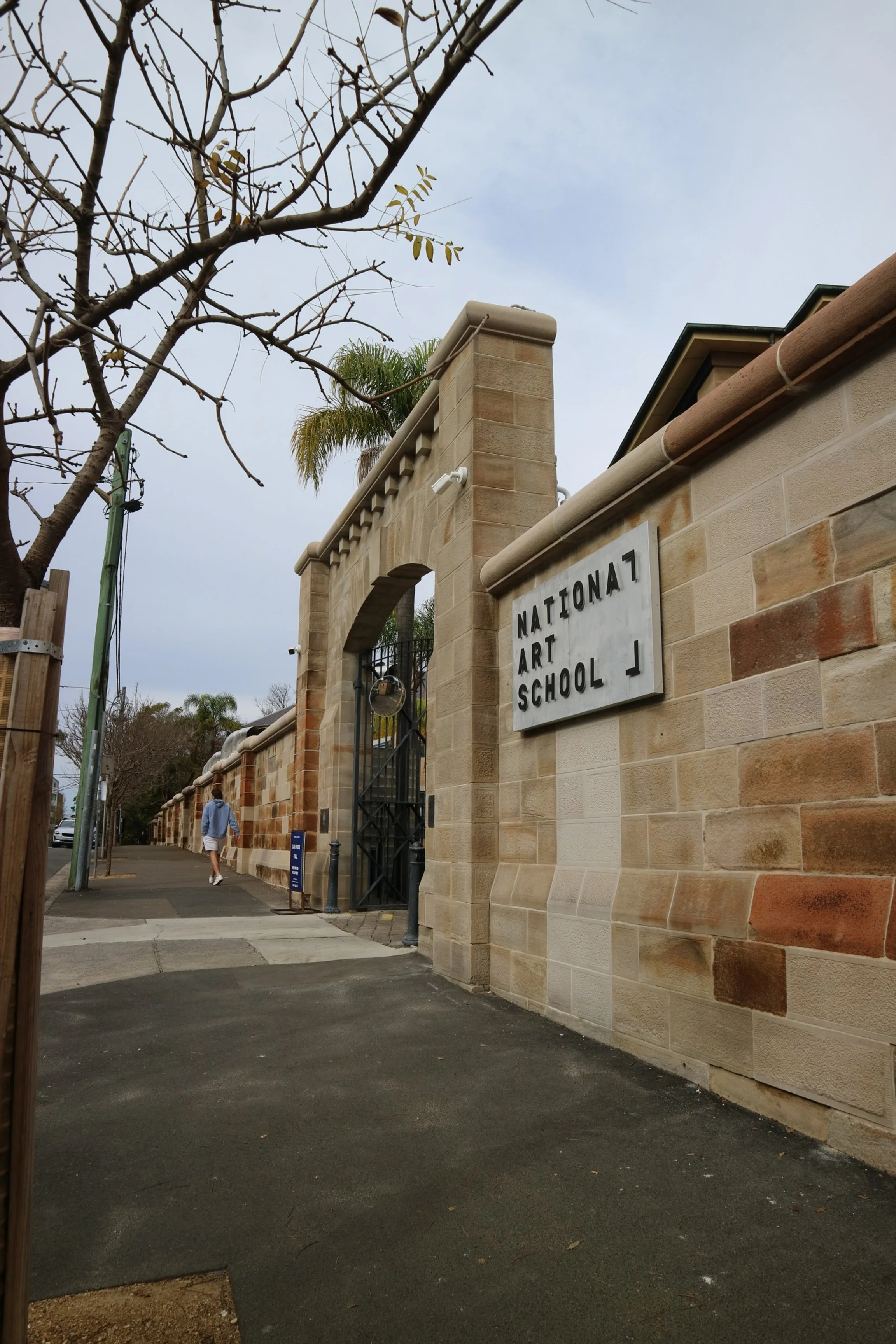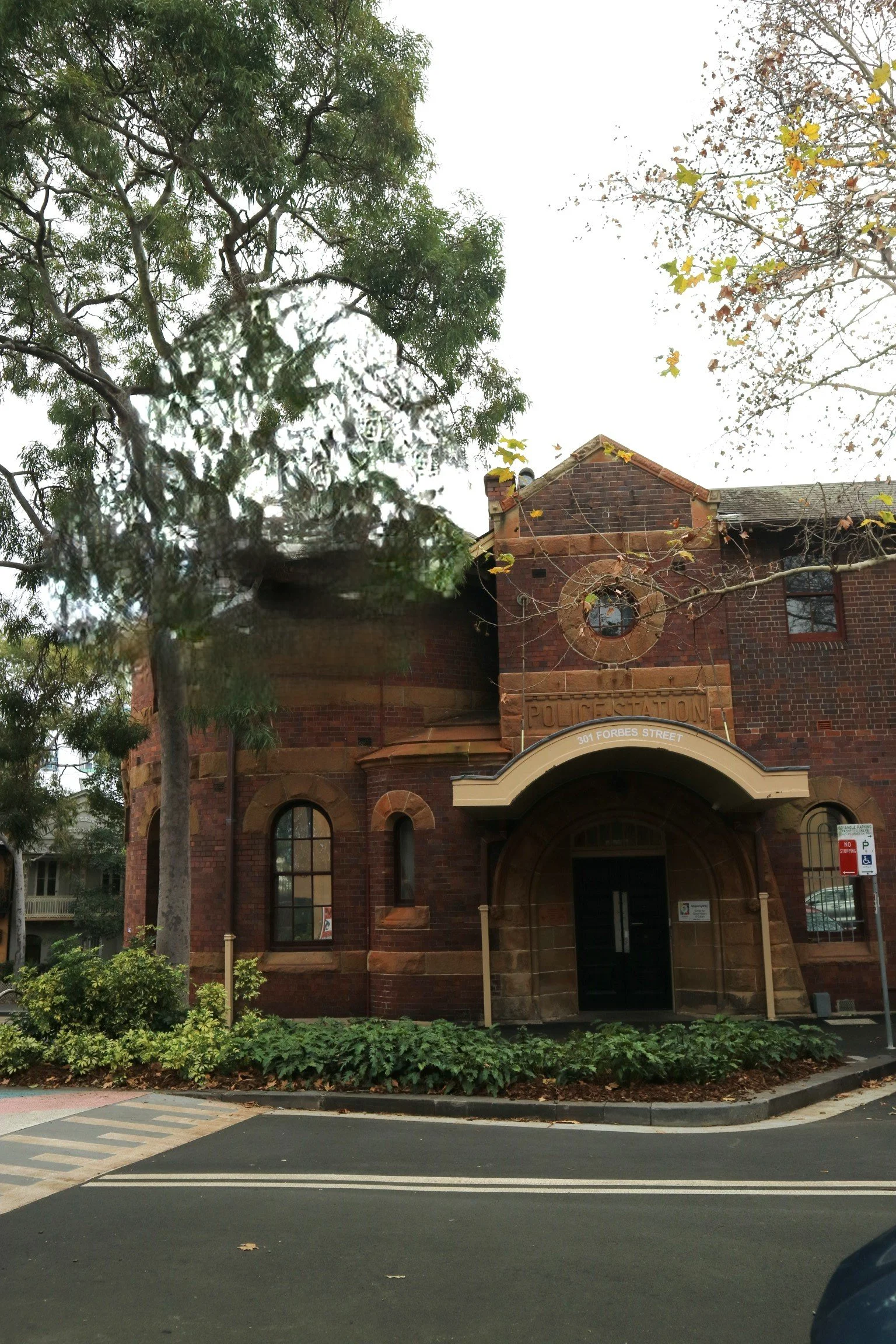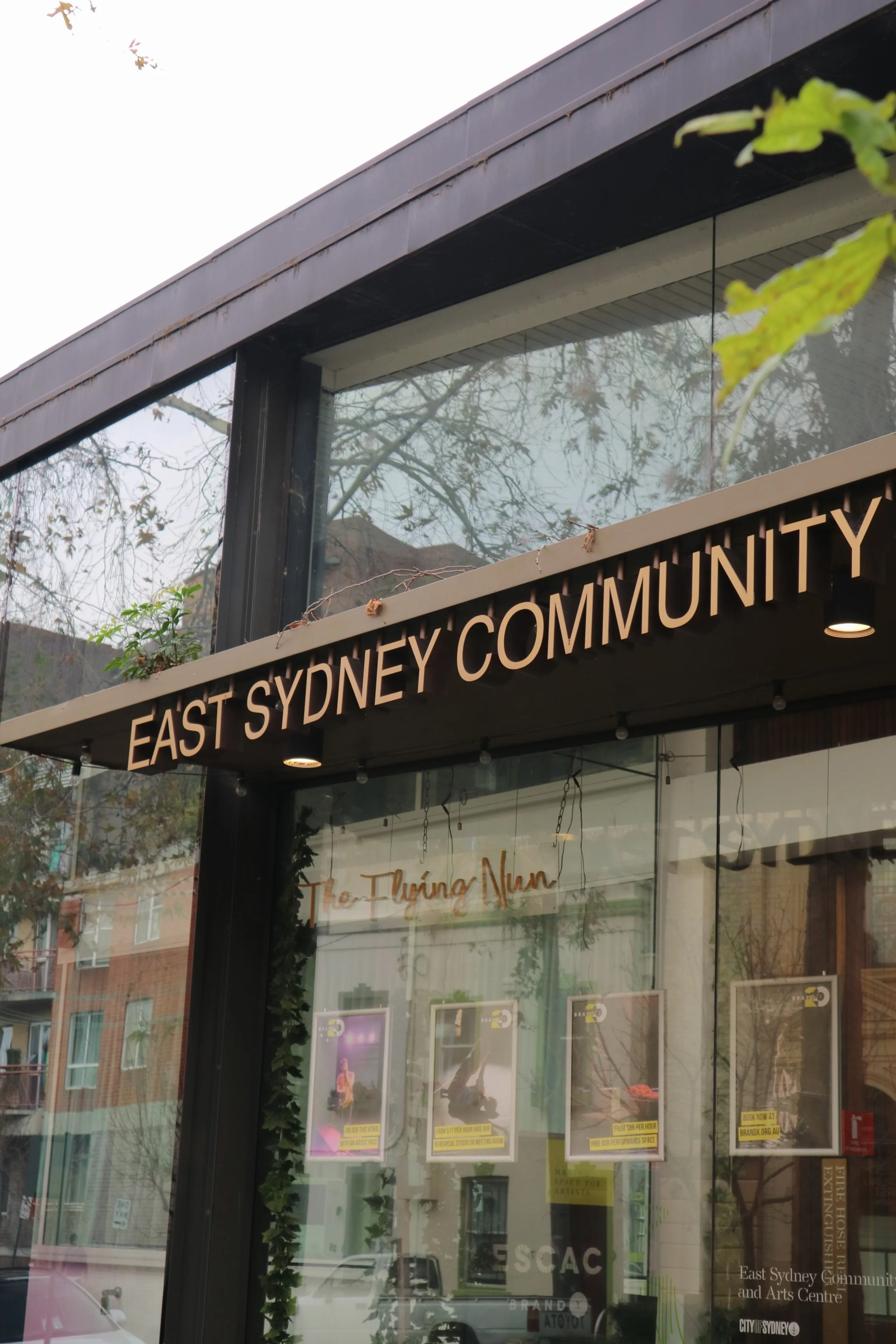Sisters of Charity
Heritage Centre Walking Tour
1
Sisters of Charity Heritage Centre
1 Rockwall Crescent, Potts Point.
Potts Point was originally called Derawun and it is Gadigal country. We, Sisters of Charity, acknowledge the First Nations Peoples and traditional custodians of this land. We respect, value, and honour their history, cultures, and spirituality. We are committed to standing in solidarity and to actively work for justice, peace, harmony, and stewardship of this land.
The Sisters of Charity Heritage Centre was opened on 6 June 2019. This was a significant day in Mary Aikenhead’s life because it was on this day in 1802 that she was received into the Catholic Church and on 6 June 1812 that she began her training to be a sister at the Bar Convent in York England, with Catherine Walsh.
The Heritage Centre’s vision is to bring alive the spirit of the congregation, its history and heritage. The Sisters of Charity were Australia’s first religious sisters and they have been of service to the community regardless of creed, wealth or ethnicity, for over 185 years.
2
St Vincent’s College
Site of Tarmons, once St Vincent’s Hospital and St Vincent’s School
End of Rockwall Crescent and Victoria Street, Potts Point.
St Vincent's College is the oldest Catholic girls’ school in New South Wales and the oldest registered girls' school in Australia. This site holds much significance to the history of the Sisters of Charity as Tarmons, the first permanent home for the sisters, was located on this site.
Built by John Verge in 1838 Tarmons (meaning sanctuary in Irish Gaelic), was the residence of Sir Maurice O’Connell and is named after his family’s home in County Kerry. Like many grand villas of the time, the original Tarmons was built of Sydney sandstone.
Tarmons was purchased by Sir Charles Nicholson who sold it to the sisters in 1856 for the huge sum of 10,000 pounds. That’s over $3 million today. Many of Sydney's leading citizens, Protestant, Catholic and Jewish, came together to help the sisters raise the money. The Sisters took up residence on 6 March 1857 in what was their first permanent home.
The sisters repaired and altered the mansion to accommodate their planned hospital for the sick poor, their school for Catholic children and as a convent. They named it after the patron saint of the poor, St Vincent de Paul, as had been the tradition with the Sisters of Charity in Ireland.
St Vincent’s Hospital, Tarmons received its first out-patient on 25 August 1857. Its first in-patient was received into the Women’s Ward in November 1857.
In May 1858 the sisters opened a small primary school, St Vincent’s School, also known as the Victoria Street Roman Catholic School. The school room was in Tarmons, at the rear of the hospital. The Infant section was for girls and boys and the Primary section was for girls only. Pupils paid a weekly fee of between 1 shilling and 1 shilling and sixpence for their schooling Education was free for families who could not afford it. The school fees were used to fund the hospital, pay for repairs to the convent and provide for the school.
As the school population increased, a new school building was built in 1863. The hospital relocated to Darlinghurst in 1870 and the following year the sisters opened St Vincent’s High School, with the first ten girls being taught in Tarmons. The sisters’ primary and secondary schools were brought together in 1882 under the new title of St Vincent’s Ladies College. Boarding facilities were added in 1884.
After 1886, Tarmons was used exclusively as a convent.
No 3 Rockwell Cresent is an example of what the original Tarmons would have looked like before it was demolished in 1966.
3
Garcia School of Music
21-23 Challis Avenue, Potts Point.
In 1894, aged 46, renowned international contralto, Mary Ellen Christian joined the Sisters of Charity. Now known as Sister Mary St Paul of the Cross, she began teaching voice at the College the next year and established a School of Music in 1897. Students could take instruction with specialist teachers and present for practical examinations. The School was renamed the Garcia School of Music in honour of the great singing teacher who tutored Mary Ellen Christian. After use of rental buildings, 21-23 Challis Ave became available for purchase in 1910 to house the School and included a concert room that seated 300 (then the largest in Australia), practice rooms and accommodation for students. SM St Paul of the Cross Christian continued to teach music until six months before her death in 1941.
4
Wayside Chapel
29 Hughes Street, Potts Point
Wayside Chapel’s vision is “love over hate” and their mission is to create a community with no “us and them”. They’ve been doing this on and around the streets of Kings Cross since 1964. Wayside Chapel offer unconditional love and support, breaking down barriers of judgement and providing a safe space where people from all walks of life are welcome.
Each year, thousands of people visit Wayside for assistance. There is a Community Service Centre which provides showers, clothing and emergency food, an Aboriginal Project and Day to Day Living Project. For younger visitors Wayside has a youth specific safe space – Wayside Youth – which offers a supportive environment for young people 25 and under, with a specific focus on those at risk in the Kings Cross area. There’s also Wayside Café and Op Shop, both of which are popular.
5
El Alamein Memorial Fountain
64-68 Macleay Street, Elizabeth Bay
The El Alamein Memorial Fountain is a heritage-listed war memorial and fountain. It was designed by the Australian architects Robert Woodward and Phill Taranto as a memorial to Australian soldiers who died in 1942 during the two battles at El Alamein, Egypt during World War II. The fountain was installed between 1959 to 1961.
The sculpture is made of bronze with brass pipes. The small-nozzle spray heads make the sphere-shaped spray very fine. The fountain sits on a hexagonal base, where the water cascades down three levels. It is illuminated at night.
El Alamein Memorial Fountain is also known as El Alamein Fountain, Fitzroy Gardens Group, Kings Cross Fountain and King's Cross Fountain. It was added to the NSW Heritage Register on 14 January 2011.
6
Messages on the footpath
Macleay Street and Darlinghurst Road, near El Alamein Memorial Fountain.
7
Uniting Medically Supervised Injecting Centre
66 Darlinghurst Road, Potts Point
In response to the spread of HIV/AIDS, staff of St Vincent’s Hospital and Sisters researched and planned the first legal injecting room in Australia. It would provide aa safe, clean space for drug addicts cared for under medical supervision, with counseling to rehabilitate drug users.
Furious debate followed the announcement with medical, ethical, and church opinions fiercely divided. Intervention from the Vatican saw the Sisters of Charity withdraw from the proposal. The New South Wales Government then worked with the Uniting Church to open the drug injecting room in Kings Cross in 2001.
8
St Canice’s Parish
24 Roselyn Street, Rushcutters Bay
While not a parish when it was first consecrated in 1889, St Canice’s Church has long been an important social centre for its parishioners and the local community, including the Sisters of Charity.
St Canice’s Primary School, Elizabeth Bay was started by the Sisters in 1892. Max Dupain took a series of images documenting their ministry here in 1953
After St Canice’s became a parish in 1940, a new school building was constructed – the present Parish Hub – designed to complement the recently completed presbytery. Until this point, the school had been conducted in the basement of the church.
Providing free meals and a welcoming community, St Canice’s Kitchen was opened in 1988. Since 1990, St Canice’s has been conducted by the Jesuits on behalf of the Archdiocese of Sydney. They have instigated many programs run from the parish, which offer a welcoming community open to all.
9
St Vincent’s Hospital Campus
Including Public and Private hospitals, Clinic, The Garvan Institute of Medical Research
Victoria Street, between Liverpool and Oxford Streets, Darlinghurst.
The original hospital at Tarmons moved to this site in 1870 and demands for services grew. Under the guidance and direction of the Sisters the hospital expanded to include services such as Sacred Heart Health Services (1890) which is for rehabilitation and palliative care, St Vincent’s Private Hospital (1909), The Garvan Institute of Medical Research (1963), Gorman House - part of St Vincent’s Hospital (1982), and St Vincent’s Clinic which is home to The Sisters of Charity Outreach, today known as Open Support (1990).
Other facilities on the St Vincent’s Hospital Campus include: The Victor Chang Cardiac Research Institute (VCCRI) (1994) under St Vincent’s Hospital. In 1996 VCCRI relocated to new premises in the Garvan Building.
The O'Brien Centre (2010) including Rankin Court Treatment established in 1984, Kinghorn Cancer Centre (2012). Tierney House, a centre that provides accommodation and health care to homeless people was established by St Vincent’s Hospital in 2012.
Today St Vincent’s Health Australia is the nation’s largest not-for-profit health and aged care provider, offering services in Queensland, Victoria and New South Wales. There are three public hospitals, ten private hospitals, 23 aged care facilities, five co-located research institutes and partner facilities, + 22,000 healthcare superheroes and 180+ years of history.
10
Old Darlinghurst Gaol (The National Art School)
Forbes Street, Darlinghurst.
The original Sydney Gaol was near the corner of George and Alfred Streets in the Rocks. In the 1820s the a new gaol was built on Darlinghurst Hill, and Francis Greenway was chosen to design the building. The walls of the gaol were built by convicts between 1822 and 1824, then the administration ran out of money.
Progress was slow but finally in 1841 prisoners were marched from the original Sydney Gaol in the Rocks. The gaol became overcrowded, and had continuous problems with drainage, security and disease. It was also the site of many public executions.
A new gaol was opened at Long Bay, near Malabar in 1914.
Darlinghurst Gaol has had many uses since its closure and today is the National Art School.
11
Qtopia
Open Wednesday - Sunday,10:30am - 4:30pm.
301 Forbes Street, Darlinghurst.
Qtopia Sydney opened in February 2024. Located in what was once Darlinghurst goal, Qtopia Sydney shares the journey of the Queer community in Australia. Exhibitions at Qtopia Sydney are grounded in five key themes that reflect the experiences and resilience of communities: HIV/AIDS, human rights, sexuality and identity, media representation, and First Nations stories.
‘Ward 17 South’ is a permanent exhibition presented in partnership with St Vincent’s Hospital, Sydney. It recreates a room from the first dedicated HIV/AIDS treatment and care centre in Australia and focuses on the period between the first AIDS diagnosis in Australia in 1982 and the closing of Ward 17 South in 2007. Told through interviews, images of day-to-day life and special occasions on the Ward with objects from the St Vincent’s Hospital Collection, this room contains materials from the time of the Ward’s renovation in 1995.
12
East Sydney Community and Arts Centre
34-40 Burton Street, Darlinghurst.
The Centre pays homage to Sister Carol Pedersen rsc, known as ‘the flying nun’, and the establishment of the self-help centre D4. There’s a sign in the foyer beside ‘Bad Habits Bar’ outlining the history of the area.
For Extra Steps
13
St Mary’s Cathedral and Crypt
On 1 January 1839, before a capacity congregation, High Mass was celebrated in the Roman Catholic Chapel (1821), for the safe arrival of Fr Ullathorne, Vicar-General, three priests, three ecclesiastical students and five Sisters of Charity.
Archbishop Polding laid the foundation stone, on the site of the Roman Catholic Chapel for the present cathedral in 1868 after the first cathedral was destroyed by fire in 1865. William Wardell was commissioned as the architect. Constructed of local sandstone, the Gothic Revival style of the Cathedral’s architecture is reminiscent of the great cathedrals of Europe.
St Mary’s Cathedral is the spiritual home of Sydney’s Catholic Community.
14
Hyde Park Barracks
The Irish Potato Famine 1945 - 1852
The Irish Potato Famine saw an influx of ‘orphans’ into Sydney Town. These were mostly single destitute girls. The sisters, together with Caroline Chisholm, worked with these 4,000 girls, most of them teenagers.
15
Macquarie Street looking towards
Circular Quay
The Aboriginal name for Circular Quay is Warrung, meaning ‘Little Child’. Sydney Cove, on which Circular Quay is located, was the site of the initial landing of the First Fleet in Port Jackson on 26 January 1788. It is most likely that the first five Sisters of Charity who arrived on 31 December 1838 would have walked up Macquarie St from Circular Quay.
16
St Patrick’s Church Hill
20 Grosvenor Street, Sydney
Built in the early 1840s, St Patrick’s stands in Sydney’s historic Rocks area. Inseparably linked with St Patrick’s history is the name of William Davis. Davis was an Irishman who was transported for his part in anti-British uprisings in Ireland in 1798. Davis obtained land in The Rocks in 1809, and in the early years of the colony, when there was no resident priest in Sydney, his home became a centre of Catholic prayer.
In 1840 Davis donated the land on which St Patrick’s is built, gifting that section of his 1809 grant bounded by Gloucester and Grosvenor Streets. The foundation stone was blessed on 25 August 1840, and the now elderly Davis astonished everyone when he came forward and placed a cheque for £1000 on the stone, an incredible sum in those days. Davis had prospered over the years through his business ventures, which included interests in grazing and licensed premises. Davis’ donation was matched by an equal grant from the colonial government. The church was officially opened on 18 March, 1844.
The Heritage Centre wishes to acknowledge and thank Anne Taylor rsc for her contribution.



